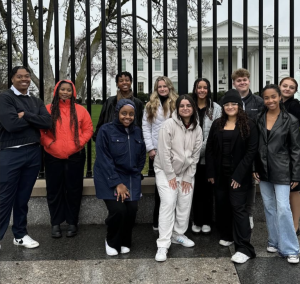In honor of Native American Heritage month, Rollins Center for Inclusion and Involvement decided to bring Dr. Adrienne Keene from Brown University to speak about Native American appropriation. The CICI was able to request Dr. Keene to speak at Rollins a year in advance, so this was a premeditated and highly anticipated information session. Adrienne Keene is a citizen of the Cherokee Tribe, and originally resided in California. She is mostly known for her Native American Appropriation blog she started while she was attending Harvard for her graduate studies. The idea for a cultural appropriation blog was triggered when she walked into an Urban Outfitters and noticed many items that were labeled as Navajo. Dr. Keene and many others argue that because clothing labels sell items labeled as authentic Native American products, it is damaging to the identities of Natives.
In America, there is a long history of whites stripping away Native American identities, and when the new colonizers of the United States snatched the land from Natives, they also decided to ban many different defining features of Native life, such as long hair, sacred clothing, and language. It was not until the 1970s that Native American culture was even somewhat tolerated as a result of protests demanding fair treatment from the government. Then, in 1978, Native Americans officially received religious freedom. Dr. Keene explained that appropriation of closely-held religious symbols is damaging to Native American identity because of their past oppression. When the clothing, jewelry, and headdresses are easily accessible to those that do not understand their culture or past, it denounces their sacred nature.
Adrienne Keene noted that appropriators do not struggle in the same way that the oppressed do. Often times appropriators are not fully educated on the lives of Native Americans, but when one decides to research Native Americans, narratives that arise have been whitewashed or are else outdated. Inaccurate representations of Native Americans only perpetuate more stereotypes leading to more mistreatment and oppression; for example, when looking through older pictures of Native tribes, many of the males are wearing headdresses, so it may seem to an outsider as a common token among a tribe. In reality, the headdress is a sacred piece that has to be earned, so not everyone has access to it. Culturally treasured items such as the headdress must be respected by outsiders and insiders alike.
Dr. Keene made it clear that these stereotypes brought on by the costumes and media only makes appropriators feel better about subjugating others. Thinking of Native Americans solely in the past tense justifies—to some people—inaccurate stereotypes. Dr. Keene related this to the North Dakota Pipeline protest; a sheriff reported that some of the Indians were shooting arrows at the helicopters flying above—this is a completely ridiculous fabrication because much of the hunting done today is accomplished with rifles. It is stereotypes like these that ignite fear into outsiders so much so that they rationalize meeting peaceful protesters trying to preserve their water source with violence. Dr. Keene and others like her are in search for corrective measures and peace. Their goals are for everyone to be knowledgeable of Native American people today—to see them as people and nothing less. Dr. Keene believes it starts with taking down Native American appropriation and educating the rest of the country.







Be First to Comment